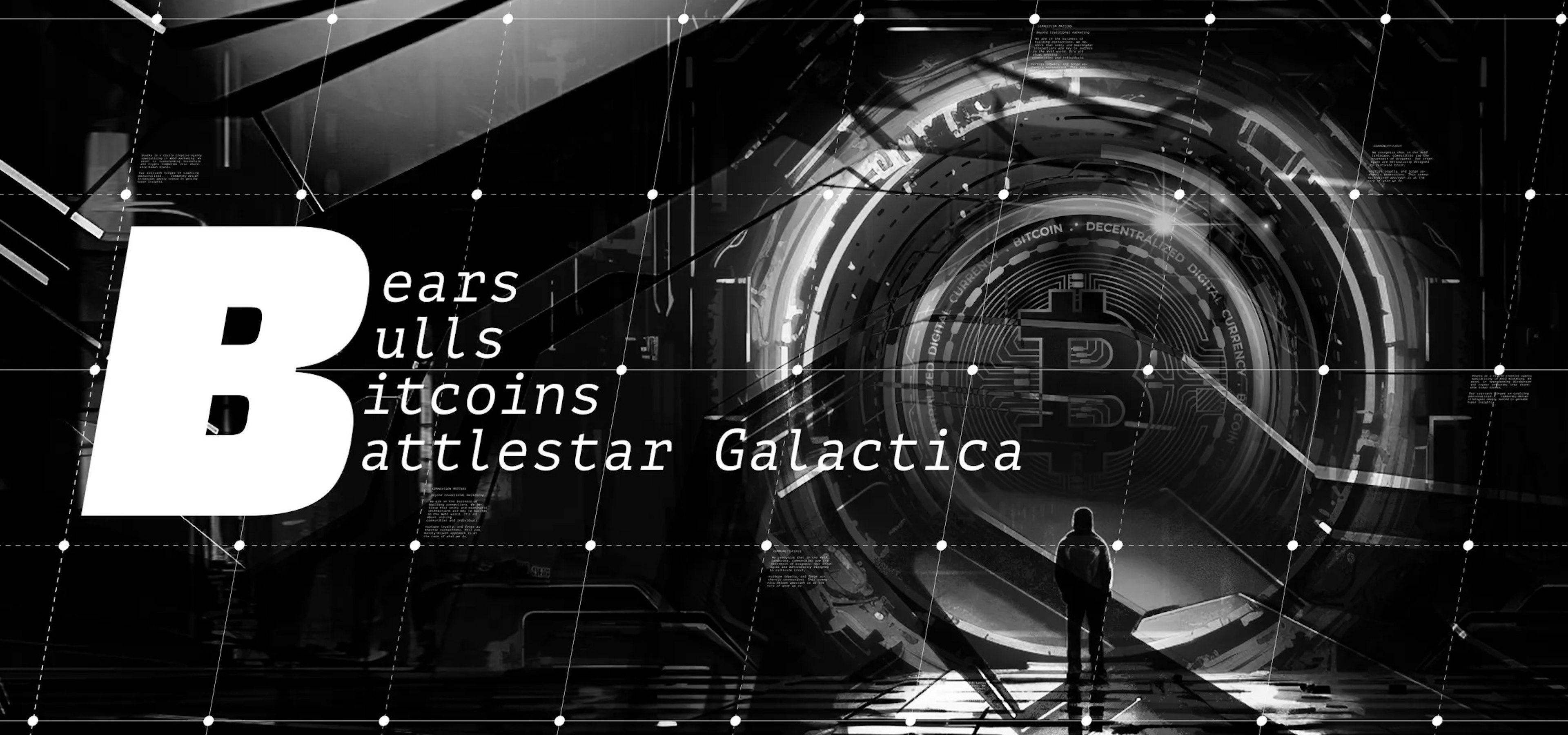

Crypto Creative | Technical Documentation
Bears, Bulls, Bitcoins... Battlestar Galactica
With the market cap of bitcoin (BTC) hard-shelved at 21 million, “mining” bitcoin is incentivized by adding blocks to the blockchain. In economics, scarcity is a problem that arises when a population has limited resources but unlimited wants and needs to consume. Bitcoin harnesses this scarcity perfectly – and has been a gold mine for some crypto users. After 210,000 blocks are mined – which occurs roughly every 4 years – the amount miners receive per BTC block is halved to increase scarcity with the caveat of making prices more volatile. People jump in on the “hype train” and buy more BTC, driving the cost up like clockwork. The next halving date is estimated to be April 17th, 2024.
...
Bitcoin Halving Clock
Estimated 2024 Halving Date: April 17, 2024
...
If you take a look at the graph, you can identify a cyclical pattern: During the last halving in 2020, price per BTC was $8,821.42. The halving before that in 2016, $650.53. The first halving in 2012, $12.35.

Source: bitbo.io
Let's choose a hypothetical example of investing $1000 in every halving scenario. For the following examples, assume BTC is valued at $30,000 for the return on investments. In 2012, if you would have invested $1000, you could have purchased 81.63 bitcoins and your return on investment (ROI) would have been $2,448,900. In 2016 with $1000 invested before the halving, 1.54 BTC could have been purchased and ROI would have been $46,200. In 2020, 0.1176 BTC could have been purchased with ROI at $3528.

So, if BTC is worth its current amount of roughly $42,000 before halving in April and the price increases to $50,000, the pattern is: return on investment is always theoretically higher than your initial investment of money - this case it being a profit of at least 19.05% if bought at the dip and sold at the peak. Keep in mind this is not including external factors that influence price.

How does it affect us as consumers?
While this seems like a recurrent event doomed to repeat itself – past cycles aren’t always indicative of future outcomes, especially because the cryptocurrency market doesn’t thrive in a vacuum. Some experts and centralized banks forecast that the halving in conjunction with different methods for diversification and investing could offer cryptocurrency resiliency like never before seen. On an unlikely front, higher income developed countries are lessening crypto usage on average and more low-middle income countries are adopting it, with economies like these having the potential to send crypto soaring. More people are turning towards decentralized currencies and diversifying portfolios away from traditional means, both digital and traditional. For consumers, the cementation of cryptocurrency in the economy via tokenization implementation and SEC proceedings expected to approve Bitcoin ETFs, the return on cryptocurrency for the year 2024 could be ten to one hundred fold – especially now that financial institutions are turning their eyes… And their wallets towards cryptocurrency. (Project Guardian - JP Morgan, tokenization procedures - Hong Kong SFC , Bitcoin liquidity - Matthew McDermott, Goldman Sachs)

Contact Us for Crypto Marketing Excellence
Join us as we compound all of these trends, facts and economic speculations backed by data in our B.L.U.C.K.A. series
Our mission is clear. We supercharge your growth. BLUCKA! BLUCKA!
...
DISCLAIMER: The information provided in this article is for general informational purposes only and should not be considered as financial advice. The content is not intended to be a substitute for professional financial guidance, and readers are encouraged to consult with a qualified financial advisor or investment professional before making any financial decisions. BLUCKA and associates are not responsible for any decision for any financial decisions or risks taken by the reader.



